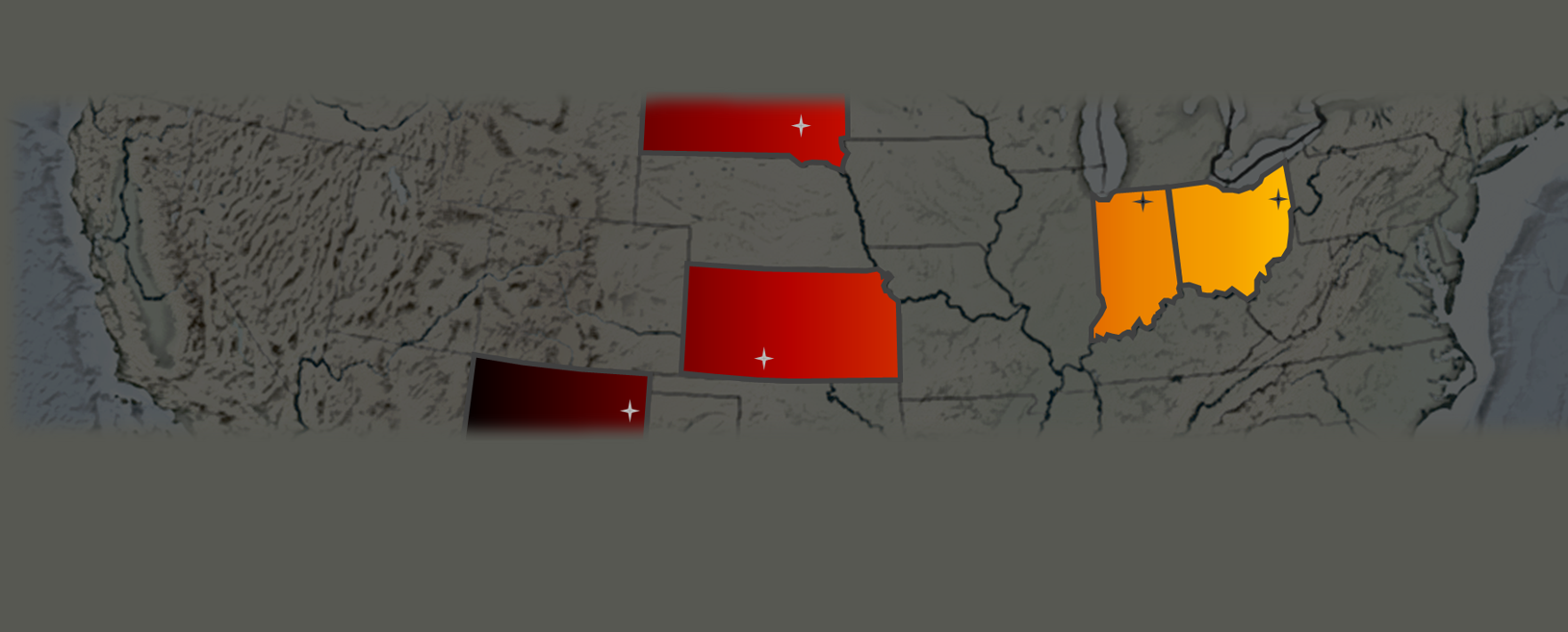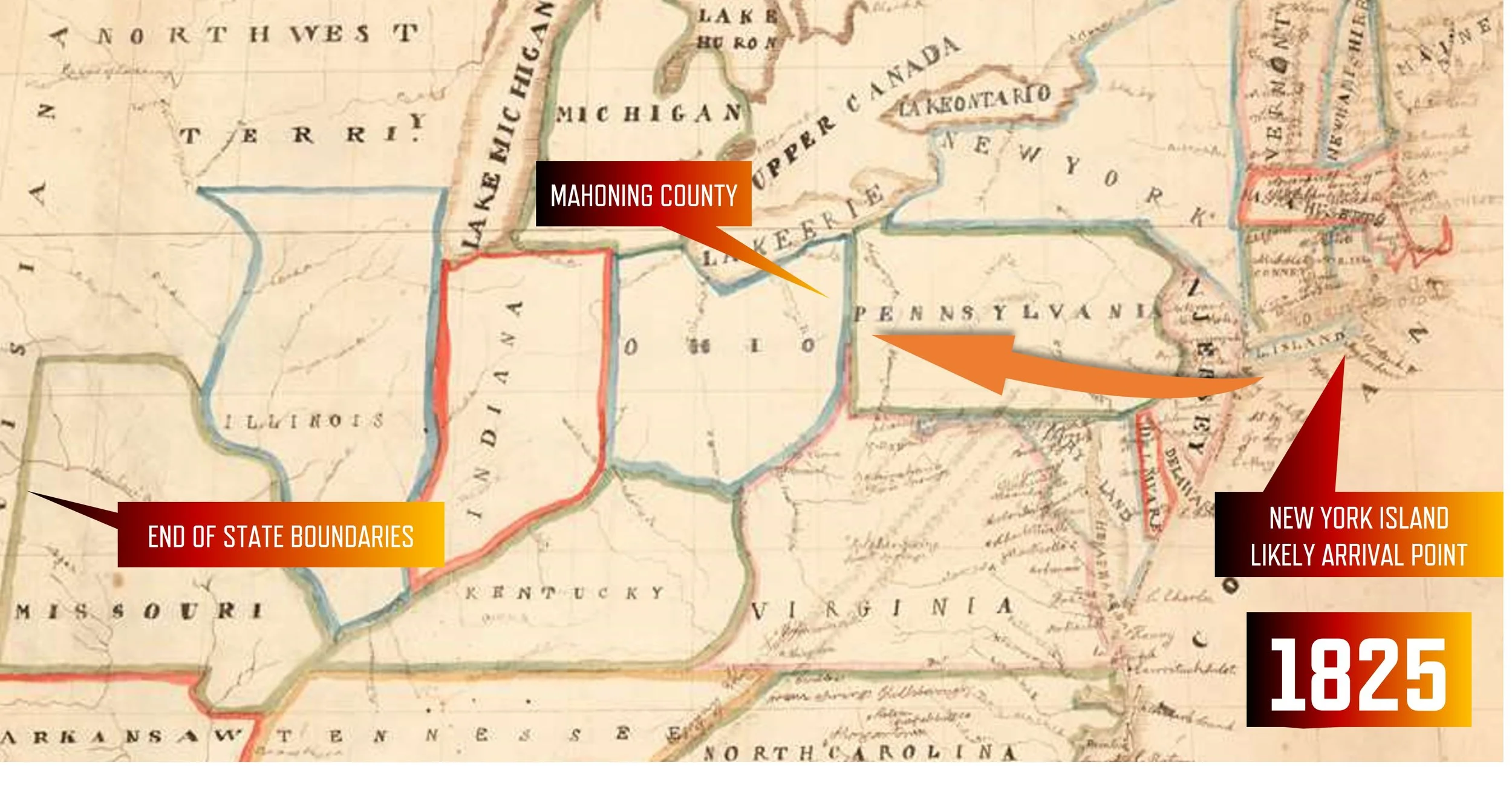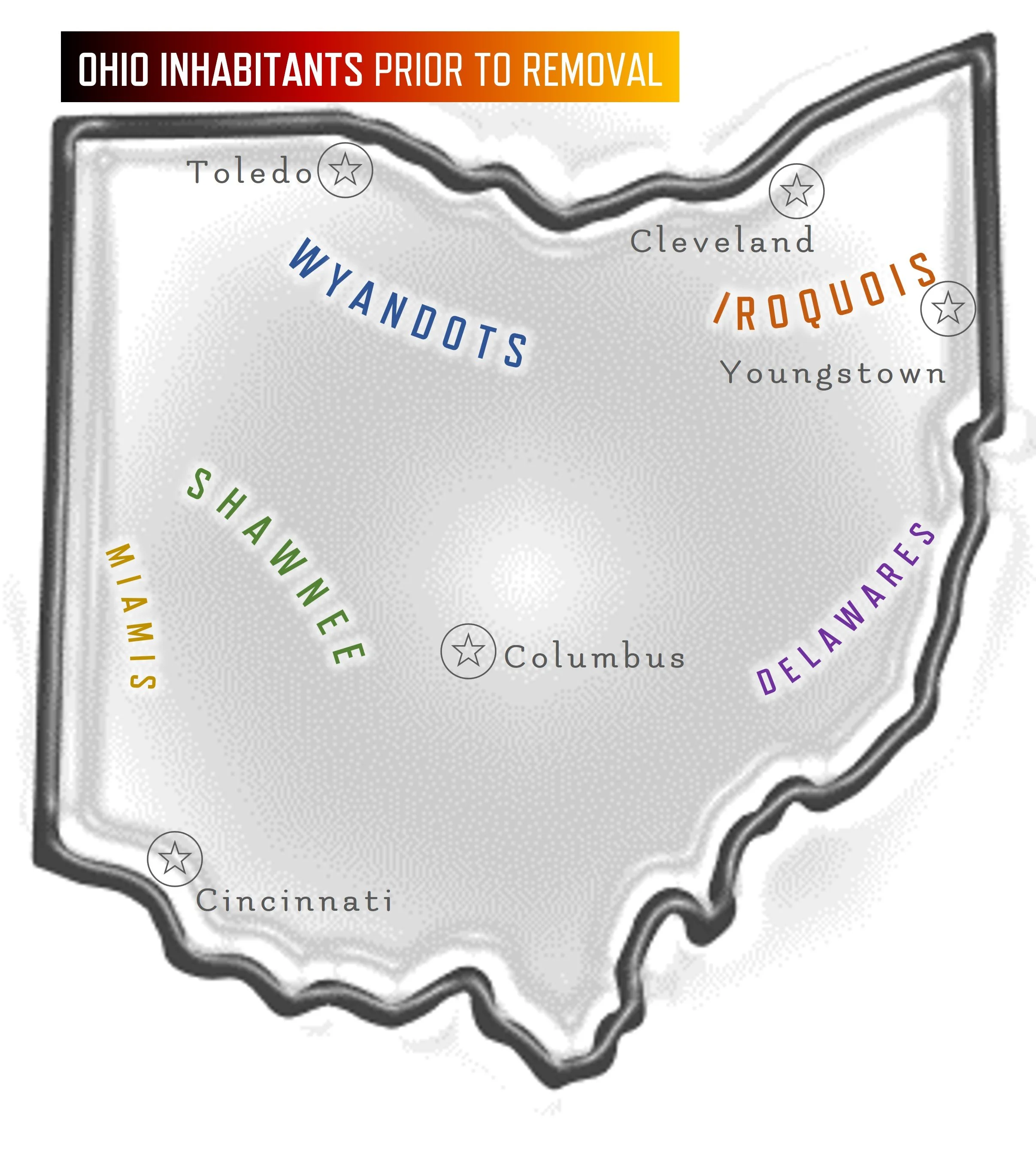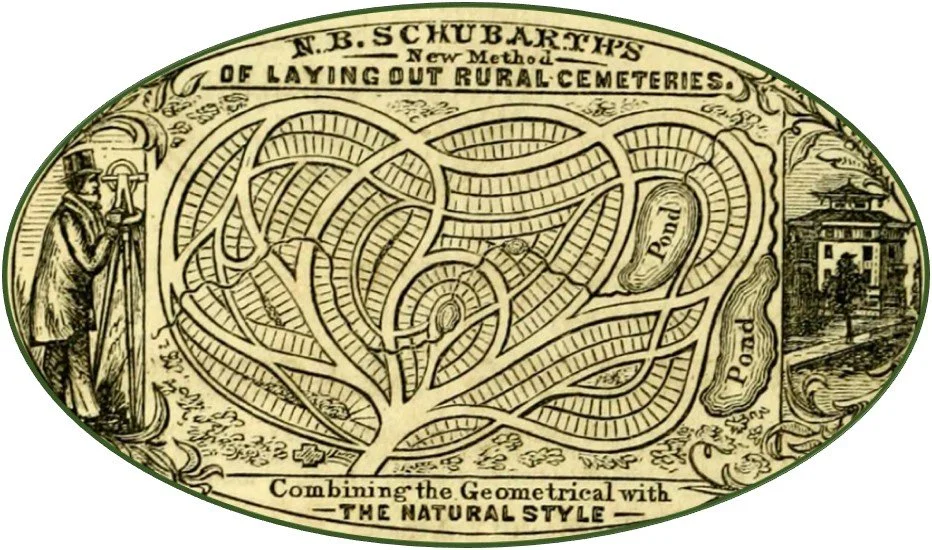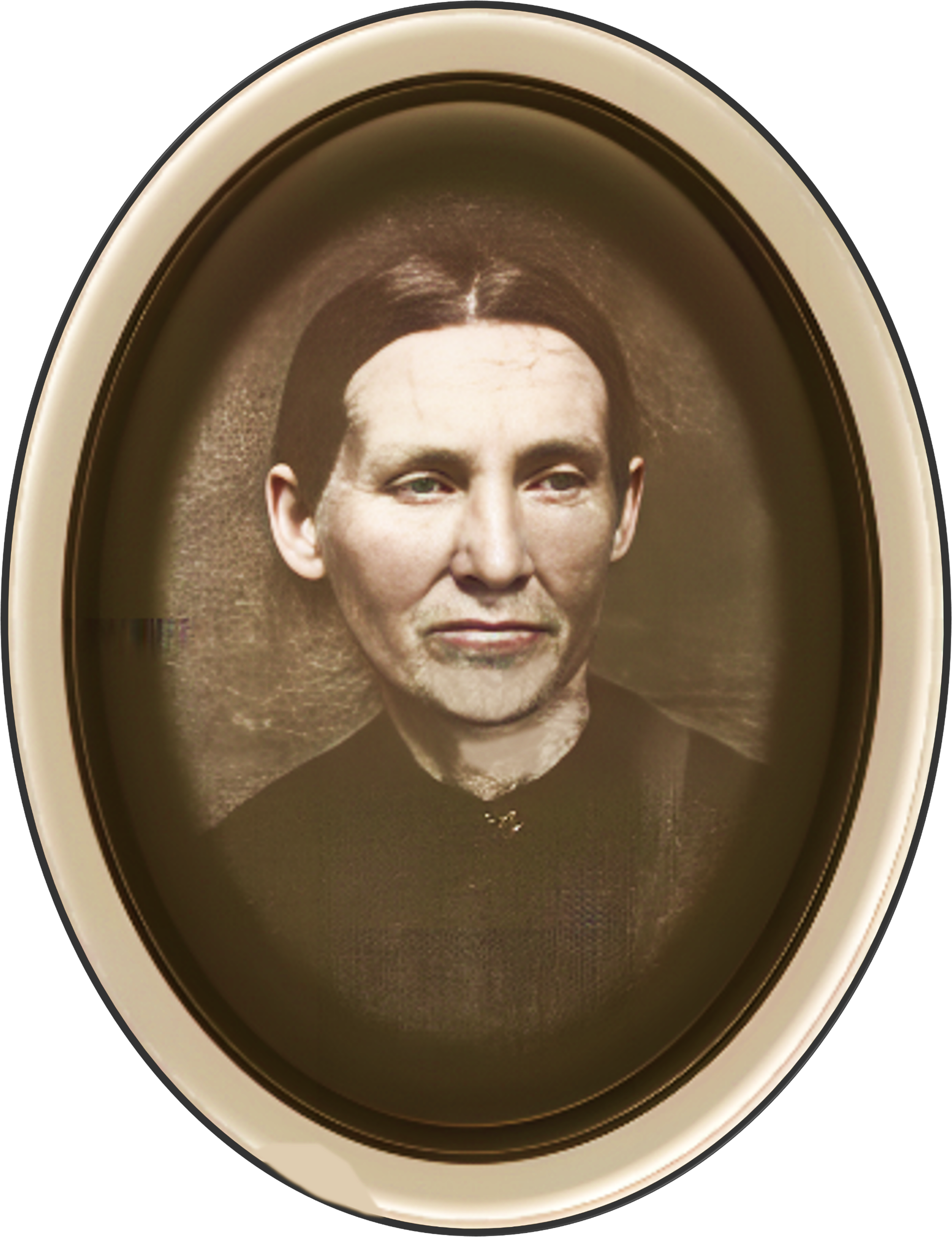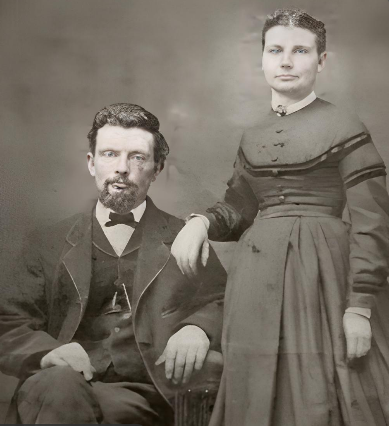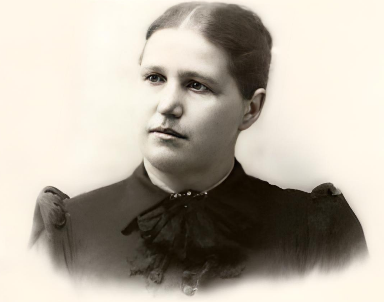ARRIVAL ON FARMLAND IN THE UPPER OHIO RIVER VALLEY
Anonymous map of Ohio and surrounding states from 1825. Ellis Island facilities for immigration were still 67 years from being opened. Yet immigrants from Europe generally came through several east coast arrival ports. 70 percent of all immigrants during the 1800s entered the United States through New York.
Jacob Link was born November 28, 1825 in farmlands surrounding Wurttemberg, Germany.
Jacob’s parents were Mennonite, and he would become a member. In 1827, his mother and father took Jacob with them to emigrate from Germany by ship and then by wagon to the Ohio River Valley of the United States. He had at least one sibling, an older brother named Christian. Christian married and settled in the farmlands surrounding Kent, Ohio.
Jacob, however, was still not three by the time he arrived. So, he grew up in Mahoning County, Ohio, which today is dominated by the city of Youngstown. According to the 2020 census, Youngstown comprises 60,000 persons, a number which has been falling from its apogee of 170,000 in about 1930. In 1860 however, Youngstown was home to just 5,300 on glaciated hills just west of the Appalachian Mountains, not long before the Links arrived considered the frontier of American expansion. The territory around Mahoning County had recently been inhabited by Iroquois communities. French Europeans and Algonquian Indians drove out the Iroquois who themselves had settled partially as part of being displaced west not long before from the Five Nations area southeast of Lake Ontario. Ohio was home to many aboriginal tribes driven westward eventually as far as states such as Kansas, including the Wyandot and Tuscarora Tribes near Mahoning County.
Ohio was previously home to Wyandot, Iroquois, Shawnee and several other indigenous cultures.
The original Ohioans
After Americans won the Revolutionary War - to establish a new nation based on establishing their rights to life, liberty, and the pursuit of happiness - they almost immediately turned their view westward. That viewpoint led them to settle in areas more and more to the west where they usually forcibly removed other cultures residing on those lands.
In Ohio, Indian removals began in the late 1700s. Resistance to removal by native residents resulted in the Northwest Indian War, which was a decided loss for the tribes of Ohio. Removal was complete by around 1818.
Some lands were reserved further west for those native former occupants who survived the war. As was often the case, however, most of the tribes were moved more than once as the frontier of the United States continued to reach for the other side of the continent.
Many of the tribes who visited Mahoning County, had fought even earlier, and much more successfully, against colonial American and British forces. From a local history of Youngstown there is a “legend of Council Rock,” a landmark still visible in the same place today.
“Back in the year 1755, about 3,500 Indians of the Seneca, Shawnee, Mingo and Delaware tribes gathered at Council Rock to celebrate their victory over the British forces lead by General Braddock and a young captain named George Washington.”
- Ted Heineman, local Ohio historian
Married near the banks of the Mahoning River
Old postcard depicting Mahoning River, near Alliance, OH.
The Mahoning River pours into the Beaver, which in turn becomes one of the early waters making up the Ohio.
By 1846, Jacob Link married Elizabeth Fishel in a home not far from the banks of the Mahoning. The day was a Thursday, October 29th, 1846, Elizabeth was from Columbiana County, Ohio just south of Mahoning County. How they met has yet to be discovered.
However, it is known that she was born in 1829. Although there are family trees showing her born in Pennsylvania, the 1870 census, based on first-hand reports from the family, list Elizabeth as born in Ohio. Elizabeth's parents, were both from Pennsylvania. Judging from the confusion in family trees, she was probably very young when she arrived in Ohio, so their move to Ohio may have been in about 1828.
Jacob and Elizabeth; joined in a “peaceful” ceremony
In the 1800’s Mennonite weddings were often described as “quiet.” It was a term of approval.
Perhaps surprising, Mennonite weddings were not held at the church. Not in a public park, or even a cemetery - a place where weddings sometimes took place during the middle 1800s to the early 1900s. Prior to 1831, when Mount Auburn Cemetery in Cambridge Massachusetts was platted, formal community cemetaries where hundreds of families laid their beloved, simply did not exist in America. Before that time, graves were often found near churches, in clusters on family farmland or in small, sometimes-fenced groves near homes. Mount Auburn Cemetery was large and incorporated an ornate gothic chapel into the design of its grounds.
The Cemetery Movement changed, formalized and engaged nature in the places where the majority of Americans were buried. They also had park-like features and some of the first formally planned landscaping combined with architecture. Life-events such as weddings were sometimes celebrated in these designed spaces outside cities.
As the “Cemetery Movement” gained momentum in America, a growing number of cemeteries were built with park-like features as Mount Auburn had introduced. They were a place where both life and death were celebrated. A metaphor for the thin separation between the living and those once-living played out in the juxtaposition of marble and living plants, shrubs and trees. Eastern varieties including weeping willows, junipers, evergreens, arbor vitaes and yews were commonly planted in those rural settings just outside the city limits of the time. They were, in many cases, the first “parks” incorporated into or nearby city designs. They often included wrought iron fencing to delineate and direct the visitor experience toward planned entries and graveled pathways. Other features included elaborate entry arches, curving drives for coach and horse use, beautiful stone masoleums, other types of vaults, benches, patios, vine-covered smaller arches, walkways and elaborate markers and kiosks. They were tranquil spaces, often situated among hills and offered visitors respite and a place to contemplate both life and death.
Mennonites at that time, however, mostly held to an established convention of holding wedding ceremonies in the home of either the bride or the officiating bishop, according to Anabaptist historian, Anna Showalter. The services were usually small, involving a handful of close friends and family, often on a Tuesday or Thursday. Jacob and Elizabeth were married on a Thursday. There would likely have been no music and no dancing at the quiet exchange of vows. The records would likely have been filed in Youngstown, the county seat, which was only formally established eight months earlier.
A new generation of American children born on American soil
Elizabeth and Jacob had eight children. Tragically, yet as was not uncommon in the 19th century, there were heart-rending deaths in an age before antibiotics or even widespread understanding of how infection spread. Common causes of death at that time included typhoid fever, scarlet fever, croup, and diphtheria. Five of the eight Link children died before or very near their 21st birthday.
Deaths came in infancy and at ages 3, 9, 17 and 21. All eight children were born in Ohio with the exception of Charles, their last. Five of the Link children made the trek from Ohio to their next westward destination, with baby Emma being just about one year old.
Elizabeth (Fishel) Link, ca. 1880.
Photographic records of Jacob have proven elusive, as have his parents’ names.
Jacob Link and family marker, North Union Cemetery, Elkhart County, IN.
Jacob Bachull and "Susan" (Susannah) (Link). Jacob was her first husband, and they were married in Ohio. Susan would later marry again in Indiana.
The Eight Children
of Jacob and Elizabeth Link:
Margaret Link - 1857-1921.
Infant
B: 1847 D: 1847
Susannah "Susan"
B: 4 May 1849 D: 1911
Anna "Mary"
B: February 1851 D: 10 May 1872
George
B: 1853 D: 18 June 1870
Margaret
B: 12 February 1857 D: 17 April 1921
Melissa Jane
B: 1859 D: 27 February 1862
Emma
B: 1864 D: 12 May 1872
Charles Ulysses
B: 19 January 1869 D: 20 December 1938

